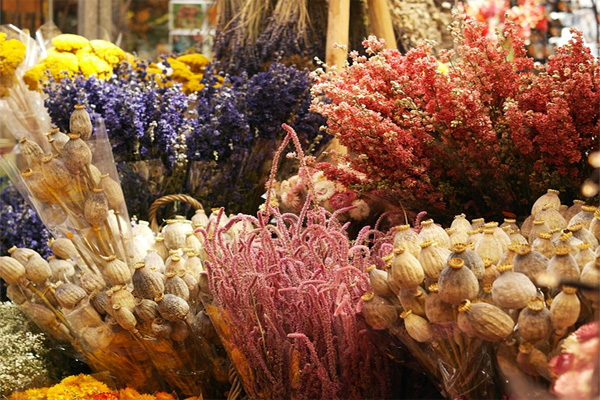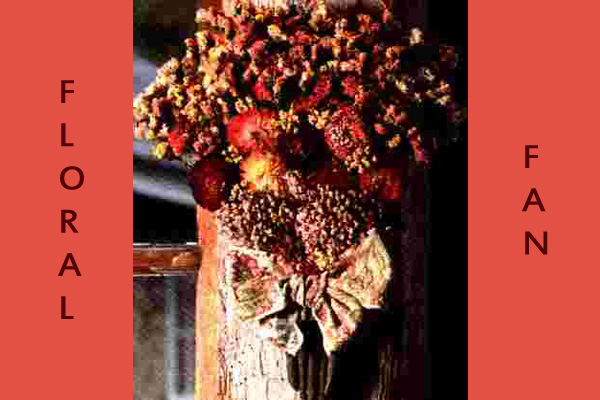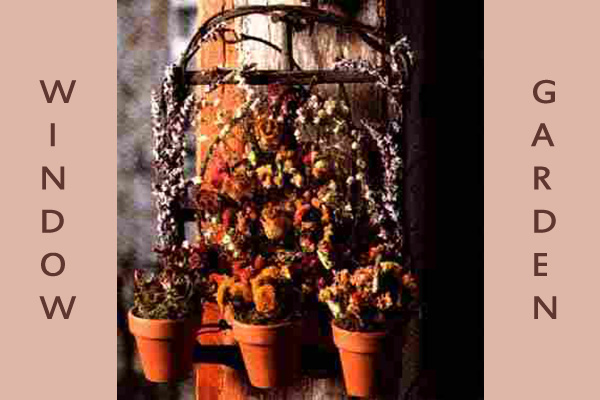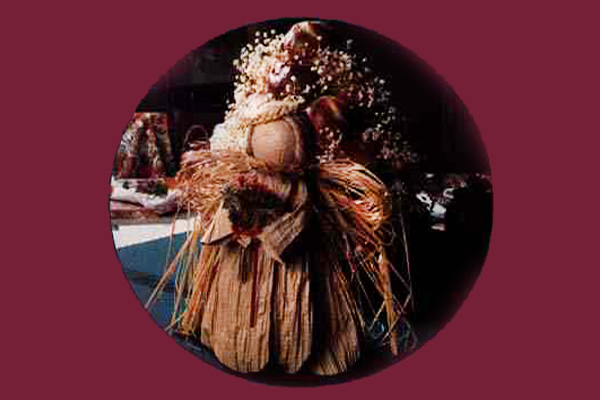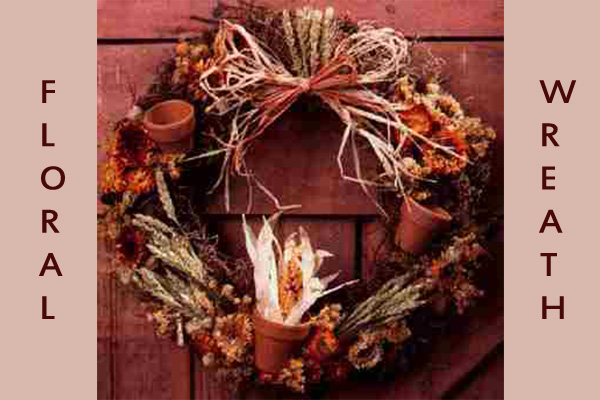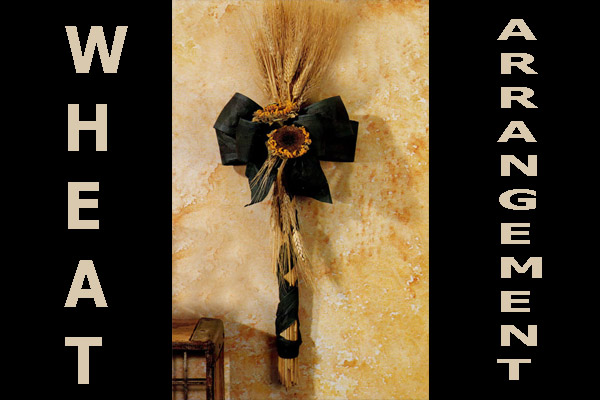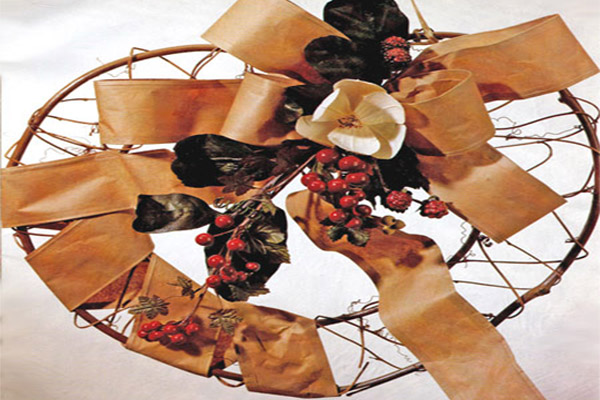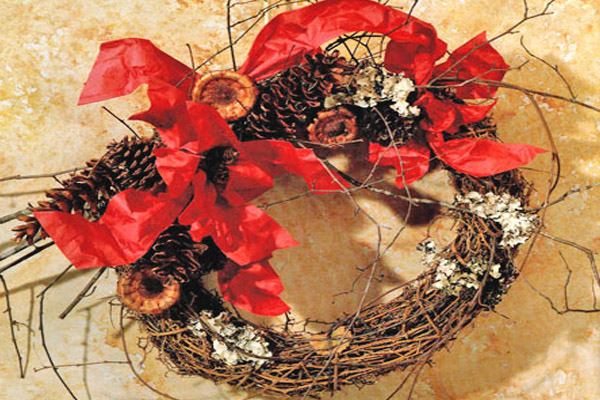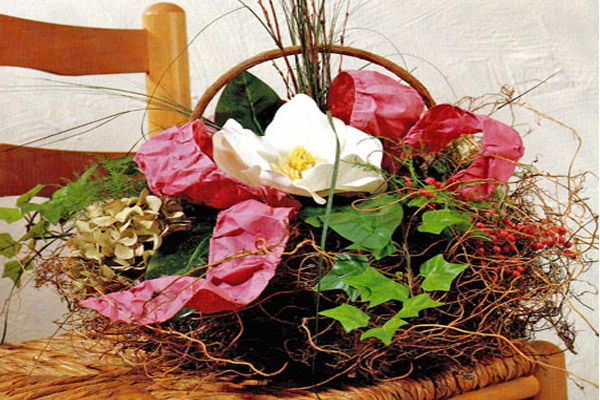Great Craft Projects
Surprise your loved ones with great craft creations...
Dried Flowers
Traditional Air-Drying Method
Traditional air-drying is the easier and best method for preserving many flowers. Flowers need only to have the leaves removed and to be hung upside down in a warm, dry, dark place until the moisture content is evaporated. Avoid direct sunlight which will cause the flowers to fade.
Flower Tips:
It is the best to cut flowers used for drying just before they reach full bloom, because they continue to open as they dry.
Avoid harvesting flowers too mature in development because they will generally shed upon drying and will not hold up well in arrangements.
Pick the flowers on a dry day, after the morning dew has dried.
Choose healthy pieces and discard bruised or damaged materials.
Instructions for Traditional Air Drying Method:
 Remove the lowest leaves from a stems. Cut the stems to even lengths and sort them out according to thickness.
Remove the lowest leaves from a stems. Cut the stems to even lengths and sort them out according to thickness.
 To avoid crushing, do not put to much herbs or flowers in a bunch. Using a rubber band, bind the bottom ends together.
To avoid crushing, do not put to much herbs or flowers in a bunch. Using a rubber band, bind the bottom ends together.
 Once you have cut the stems, it is very important to remove them from the sunlight as soon as possible.
Once you have cut the stems, it is very important to remove them from the sunlight as soon as possible.
 Stretch a chain across a room just below the ceiling. (Plant materials hooked through a chain link won't slip as they might on a slick wire).
Stretch a chain across a room just below the ceiling. (Plant materials hooked through a chain link won't slip as they might on a slick wire).
 Hang the flowers and herbs upside down in an airy, dry, warm and dark place such as well-ventilated attics, garages or large closets. Drying flowers in the dark is the most important factor in maintaining good color. Be sure to supply good air circulation to prevent mold and speed drying. Orange, blue and pink flowers will retain the best color when dried.
Hang the flowers and herbs upside down in an airy, dry, warm and dark place such as well-ventilated attics, garages or large closets. Drying flowers in the dark is the most important factor in maintaining good color. Be sure to supply good air circulation to prevent mold and speed drying. Orange, blue and pink flowers will retain the best color when dried.
 Whole rosebuds can be hang upside down in bunches of five to six roses with leaves intact in a warm airy place to dry. Strips the lowest leaves from the stalks before tie them in bunches.
Whole rosebuds can be hang upside down in bunches of five to six roses with leaves intact in a warm airy place to dry. Strips the lowest leaves from the stalks before tie them in bunches.
 It takes between one to three weeks for flowers to dry. The length of the drying period will vary, depending on the temperature and humidity. Herbs need between one to two weeks to dry. Check the plants every few days, because if they remain in drying area to long, they my become to dry for use. Dried materials should feel papery and firm, not limp or damp. Many garden herbs and flowers dry extremely well.
It takes between one to three weeks for flowers to dry. The length of the drying period will vary, depending on the temperature and humidity. Herbs need between one to two weeks to dry. Check the plants every few days, because if they remain in drying area to long, they my become to dry for use. Dried materials should feel papery and firm, not limp or damp. Many garden herbs and flowers dry extremely well.
 Store your dried materials in covered boxes, airtight containers or in brown paper bags. Keep flower and herb groups separate and be sure to label these containers. Transfer prepared materials to a cooler location that remains dry and dark.
Store your dried materials in covered boxes, airtight containers or in brown paper bags. Keep flower and herb groups separate and be sure to label these containers. Transfer prepared materials to a cooler location that remains dry and dark.
 To dry plants and flowers of which are heavier than their stems (for example straw flowers, chrysanthemums etc.) use the plastic plant trays found at hardware stores or greenhouses. Position the trays so their bottom surfaces are several inches above the floor and drop the flower stems into the holes. The flower heads, which won't fit through the holes, will dry in an open position.
To dry plants and flowers of which are heavier than their stems (for example straw flowers, chrysanthemums etc.) use the plastic plant trays found at hardware stores or greenhouses. Position the trays so their bottom surfaces are several inches above the floor and drop the flower stems into the holes. The flower heads, which won't fit through the holes, will dry in an open position.
 Another method for flowers with weak stems is florist's wire insert. Cut the plant stem off, cca 1/2-inch below the flower and insert floral wire up through the remaining stem and out through the center of the flower. Make a hook at the top of the wire, and pull it back down into the flower, but not all the way through. The stem will shrink and dry tightly around the wire. Once the flower is dry, wrap floral tape around the stem and wire.
Another method for flowers with weak stems is florist's wire insert. Cut the plant stem off, cca 1/2-inch below the flower and insert floral wire up through the remaining stem and out through the center of the flower. Make a hook at the top of the wire, and pull it back down into the flower, but not all the way through. The stem will shrink and dry tightly around the wire. Once the flower is dry, wrap floral tape around the stem and wire.
 To dry flower heads just spread them on sheets of newspaper and leave them in a warm airy place to dry completely.
To dry flower heads just spread them on sheets of newspaper and leave them in a warm airy place to dry completely.
 Use clothes-drying racks to dry short-stemmed herbs, bundle them and hang them on racks.
Use clothes-drying racks to dry short-stemmed herbs, bundle them and hang them on racks.
 The dried material will have a natural fragrance but this will soon fade if you do not use a fixative. Orris root is one of the best for pot pourri, but you can also use other spices such as cinnamon, mixed spice, nutmeg, cloves, orange peel, lemon peel or sea salt.
The dried material will have a natural fragrance but this will soon fade if you do not use a fixative. Orris root is one of the best for pot pourri, but you can also use other spices such as cinnamon, mixed spice, nutmeg, cloves, orange peel, lemon peel or sea salt.
 Essential oils are another vital fixative which will add depth and intensity of fragrance to your dried material. Avoid contact with hands because oil has a very strong perfume. Store the oils in the glass bottles, never in plastic bottles. Use one drop at a time because if you use to much it will upset the real fragrance.
Essential oils are another vital fixative which will add depth and intensity of fragrance to your dried material. Avoid contact with hands because oil has a very strong perfume. Store the oils in the glass bottles, never in plastic bottles. Use one drop at a time because if you use to much it will upset the real fragrance.
Other Methods to Preserve Plants and Related Links:
Great Craft Projects
Autumn Window Garden
Perfect combination for autumn captured forever and country...
Paper Twist Doll
To make this paper twist doll you will need...
Dried Floral Wreath
Create something lovely for the perfect fall accent...
Sheaf of Wheat Arrangement
To make this sheaf of wheat you will need...
Magnolia Heart Wreath
You will enjoy this magnolia heart wreath...
Warm Winter Wreath
Give your family a reason to love winter...
Magnolia Basket
Make this beautiful basket your weekend project ...
RomWell Cookbook
Discover delicious and easy recipes for entertaining...Eating Well to Control Your Health
Eating well and managing your fat intake, maintain your healthy weight, staying active and not smoking are choices we can make to reduce total cholesterol and "bad" cholesterol levels and increase "good" cholesterol. Changing what you eat can reduce your blood cholesterol level. If the level does not come down after a few months, your physician may recommend a stricter diet.
A healthy, balanced diet can lower your risk of CVD. If you already have cardiovascular disease, balanced diet will help you to reduce the chances of getting it worse and it will also help you to stay in shape longer and as healthy as possible. Coronary heart disease is a major cause of death in the Western World and increasingly elsewhere. Although it is a multifactorial disorder, the integrated role of diet attracts enormous attention since it is the one component which can be modified by all and is strongly correlated to population behaviour.


